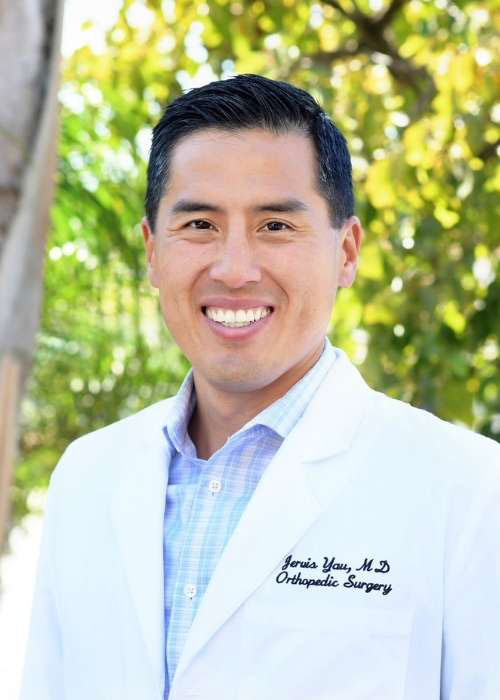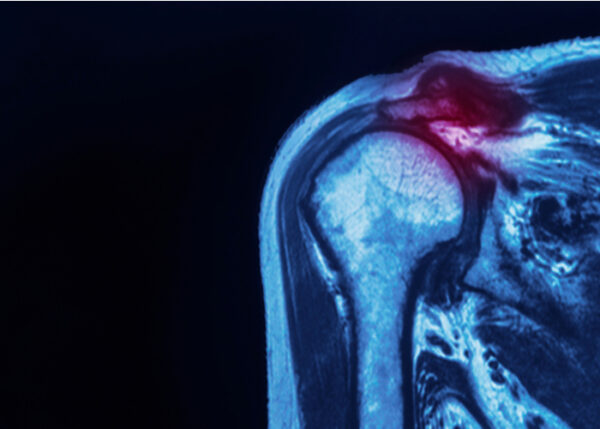Labral, SLAP & Bankart Tear Specialist

Are you an athlete who participates in sports that involve throwing overhead? If so, you may be at risk of developing a shoulder labral tear. A shoulder labral tear is a common injury sustained after a fall on an outstretched hand, from a sports injury or from natural degeneration of the labrum. Shoulder labral specialist, Dr. Jervis Yau provides diagnosis and both surgical and nonsurgical treatment options for patients in Santa Barbara who have sustained a shoulder labral tear. Contact Dr. Yau’s team today!
What are Labral, SLAP & Bankart Tears in the Shoulder?
Found in the shoulder joint surrounding the socket (glenoid), the labrum is a circular rim of cartilage that serves two important functions. The first function is an attachment site for the biceps tendon and the glenohumeral ligaments, while the second function is to deepen the socket so the shoulder remains in place while in motion. A dislocation or other shoulder injury may cause the labrum to become peeled off the rim of the socket. When this occurs, the shoulder will lose functional stability and lead to pain or dislocation. A torn labrum can happen from a fall on an outstretched arm or repetitive overhead athletes. The two most common types of labral tears seen by Dr. Jervis Yau, Santa Barbara, Goleta, Santa Maria and Ventura, California orthopedic shoulder specialist, are SLAP and Bankart tears.
A specific type of labral tear, A SLAP (Superior Labrum Anterior to Posterior) tear involves the attachment site of the biceps tendon located at the top of the shoulder joint. An anterior or posterior Bankart lesion occurs when the labrum tears at its anterior-inferior or posterior-inferior attachment sites, respectively. SLAP and Bankart tears are typically caused by a traumatic event. However, SLAP tears commonly develop due to overuse, especially in the overhead athlete.
What are the Symptoms of a Labral Tear?
A torn labrum causes patients to experience a wide number of symptoms, including:
- Deep shoulder pain
- Shoulder instability/dislocation
- Shoulder weakness
- Shoulder stiffness
- A popping sensation
- A clicking sensation
SLAP and Bankart tears may make it difficult to perform activities of daily living. Patients who have sustained a Bankart tear may also feel a sensation that the shoulder may dislocate or slip out of place while in motion.

How is a Labral Tear Diagnosed?
In order to diagnose the type of labral tear, Dr. Yau will perform a thorough history and physical examination. It is critical to determine if there is significant instability in the setting of a labral tear. X-rays and MRI arthrogram (with dye injected into the shoulder) are commonly performed to evaluate for SLAP and Bankart tears.
How are Labral Tears Treated?
Treatment of labral tears depends largely on the type of labral tear, severity, level of shoulder instability, age and activity level.
Non-Surgical
In cases of a mild labral injury, Dr. Yau usually prescribes a non-surgical treatment plan. Non-surgical measures include rest, ice, medications and a physical therapy program designed to restore shoulder function.
Surgical
Shoulder surgery may be necessary if conservative measures fail or if the torn labrum is significant. Dr. Yau will recommend surgery based on type of labral tear, severity, and other associated shoulder pathology.
Common arthroscopic surgical techniques performed by Dr. Yau include:
- Debridement: This procedure is typically recommended for SLAP tears that do not involve the biceps tendon. Debridement involves Dr. Yau smoothing out the damaged area.
- Labrum repair: A labrum repair is performed to restore stability to the joint, most commonly found in cases associated with chronic shoulder instability and Bankart tears.
- SLAP repair: A SLAP repair involves reattaching the labrum to the socket using anchors, commonly reserved for young athletes.
- Biceps tenodesis: Performed for SLAP tears in older individuals or those with biceps tear. This involves removing the long head of the biceps tendon from the superior labrum and reinserting it into the proximal humerus.
- Bankart repair: typically performed in patients with shoulder instability. The capsular ligaments and labrum is tightened and repaired back to the glenoid to improve stability and prevent dislocations.
For additional information on a labral tear, such as SLAP and Bankart tears, or to learn more about torn labrum treatment options, please contact the Santa Barbara, Goleta, Santa Maria and Ventura, California orthopedic practice of shoulder specialist Dr. Jervis Yau.